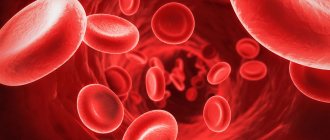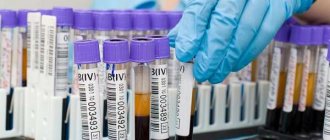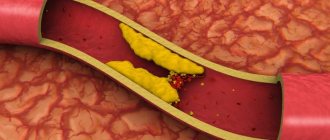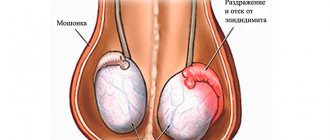What does total protein concentration mean?
Proteins, or proteins, are constantly present in the blood and are transported throughout the body. Thanks to them:
- coagulation reactions are triggered;
- metabolism occurs and is regulated;
- nutrients and nutrients are transported;
- a stable volume of the bloodstream is maintained;
- immune mechanisms are triggered;
- blood elements are in a suspended state and do not stick together.
The constancy of the protein indicator is the key to homeostasis in the body - stable blood properties and the continuity of metabolic processes in tissues, the connection between all organs and systems. Protein levels can be measured in plasma or serum. The first is the liquid fraction of blood, purified from formed elements. Serum is plasma purified from fibrinogen protein. Because of it, the value of total blood protein increases by 2–4 g/l.
Whey proteins are conventionally divided into 2 types. The first group - albumin - makes up about 55%. These proteins are produced primarily in the liver. They provide transport of pigments, hormones, vitamins, and pharmacologically active substances. Albumins prevent the liquid part of the blood from sweating through the vascular walls into the tissue. If their concentration changes, edema may develop.
The second group is globulins. These substances include enzymes, antibodies, and other substances (about 500 types in total). Thanks to them, nutrients are distributed throughout the body.
Globulins
This group is represented by different types of proteins. Globulins are divided into alpha1 and alpha2 globulins, beta globulins and gamma globulins. They are united by a large molecular weight, but their percentage is small - only 4 or 5 percent of the total protein is made up of these compounds.
The alpha1-globulin fraction includes the important protein antitrypsin, which prevents the destruction of other serum enzymes, and also signals inflammatory and oncological diseases. Alpha1-antitrypsin deficiency leads to the development of severe lung damage at an early age.
The alpha2 fraction is represented by haptoglobin, ceruloplasmin and alpha 2-macroglobulin. Haptoglobin participates in the processes of hemoglobin decomposition in the body, transporting it to the site of destruction. Ceruloplasmin transports copper, and it can also be stored in complex with this protein. Alpha2-macroglobulin is part of the immune system and inhibits the growth of cancer cells.
Beta globulins are mainly represented by transport molecules of protein origin, transferrin and hemopexin. Transferrin is necessary for the transport of iron both to places of use and to the “storage” - the liver. Hemopexin is involved in binding hemoglobin during the destruction of red blood cells and transporting it to the site of neutralization.
The gamma globulin fraction includes immunoglobulins, with the help of which the body “recognizes” foreign antigens and removes them from the body. That is, they represent part of the immune system.
Total protein
The value of this indicator not only provides information about protein synthesis in the body, but also about other metabolic indicators. An increase in its amount is called hyperproteinemia and is observed in many infectious and inflammatory diseases.
A decrease—hypoproteinemia—develops with malnutrition, cancer, and cirrhosis.
Dysproteinemia is also distinguished - a violation of the ratio of individual fractions, for which it happens and it is necessary to determine them.
What does protein in the blood show?
The state of amino acid metabolism can be determined by the protein content in the blood. Protein, in fact, is an indicator of the body’s regenerative abilities and its resistance to adverse conditions, because proteins are the “building blocks” of cells and tissues, giving them elasticity and strength.
Total protein has 3 fractions:
- Albumin. They make up the largest portion of proteins. These low molecular weight proteins provide the body with material to maintain the structure and create cells.
- Globulins. They occupy about 45% of all proteins. These are large molecular proteins. Allows the synthesis of immune proteins.
- Fibrinogen. Occupies the smallest part of proteins. It is a high molecular weight protein. Responsible for blood clotting.
We must remember! Protein is the main building material for cells and tissues of the body.
Different protein fractions are responsible for important tasks: cell synthesis, maintaining immunity and blood clotting.
In addition, proteins deliver nutrients and medications to necessary organs. Proteins also control the filling of the vascular bed and the balance of red blood cells, platelets and leukocytes. Protein is responsible for blood properties such as fluidity and viscosity. So it directly affects hemostasis, affecting the functioning of blood vessels and the heart.
The importance of protein in a woman’s body
Protein is an important element in the human body, obtained by the body from food. Without protein, there is no normal growth and development of internal organ functions. The norms for women by age can be found in the reference table.
The total protein content in the body is 17-20% of body weight
This indicates its importance in the functioning of the body. Protein is the main material for the construction of new cells
This important element is represented by the following types:
- Albumin, important in the structure of cellular structure.
- Globulins are proteins that provide immunity functions and the structure of immune cells.
- Fibrinogens are high molecular weight proteins that stop bleeding of various etiologies and are responsible for normal blood clotting.
Total protein values may have a wide range that differs from normal values. Doctors compare the norms of total protein in the blood of women by age, checking the tables. Special tables are used in which protein indicators are tied to age categories; they are easier to navigate when determining the presence of deviations.
| Woman's age | Protein rate in g/l |
| 18 – 34 years | 76 – 79 |
| 35 – 59 years old | 80 – 83 |
| 60 years – 74 years | 74 – 77 |
| over 75 years old | 70 – 77 |
Normal total protein data in healthy adult women is 75.8 – 83 g/l. Deviations from the norm by 10% in women may be due to the functioning of the hormonal system and the presence of increased muscle mass in female athletes. All this is taken into account by the doctor when he looks in the table at the norm of total protein in the blood of women by age.
A change in protein levels may be associated with pregnancy, then the gynecologist evaluates how a deficiency or excess of total protein affects the gestation of the fetus. A pregnant woman needs more protein so that the baby grows and develops properly in her womb. The normal level of protein in pregnant women is considered to be 65-85 g/l.
These norms for total protein in women are determined by blood serum; for this purpose, separate tables are compiled by age. Serum analysis provides an assessment of the state of health, balanced nutrition, and the effectiveness of the functions of internal organs.
This indicates normal protein metabolism. If deviations are detected, additional examination of the woman will be required to clarify their causes.
If an analysis to determine the norm of total protein in the blood of women is taken from a vein, a separate table is compiled by age. This test is taken early in the morning, long before breakfast. In the morning, before blood sampling, you are allowed to drink some clean still water.
C-reactive protein
Reactive protein is the most sensitive marker of infectious and inflammatory processes, as a homeostatic response of the body to infection. Its concentration directly depends on the extent of the lesion, severity and stage of the disease. The content of CRP in the blood increases rapidly in the first 5-8 hours after infection or injury.
Values can increase 50-100 times. For diagnosing diseases, the CRP indicator in a biochemical blood test is as important an indicator as ESR (erythrocyte sedimentation rate) in a general clinical blood test.
If acute phase proteins are detected in the blood, it means that in the body:
- an acute infection develops (infection with bacteria, viruses, fungi, protozoa and worms);
- there is a relapse of a chronic disease (pyelonephritis, cystitis, cholecystitis), a complication of diabetes mellitus – ketoacidosis crisis;
- there is tissue damage with the formation of suppuration (burns, lacerations, abscesses, frostbite);
- necrotic processes progress (myocardial infarction, cirrhosis, gangrenous lesions and trophic ulcers);
- Gynecological diseases in women have worsened (endometriosis, endometritis).
A state of shock can increase the level of reactive protein. In adults, the cause is often vascular pathologies (angiopathies) and atherosclerosis.
Approximate indicators of DRR for violations
| Up to 30 mg/l | 40 – 100 mg/l | More than 100 mg/l |
| Hepatitis, herpes, chicken pox, influenza, sore throat and other viral infections, oncological tumors, collagenosis and vasculitis | Bacterial infections, appendicitis, peritonitis, heart attack | Sepsis, burn lesions over 50% of the body |
Blood protein norm
In adults, the norm of total protein in the blood is the same for men and women and ranges from 65 to 85 g/liter. In blood plasma, the protein content is slightly higher than in serum, since it also contains fibrinogen, which is involved in the process of blood clotting. Because of this, blood serum is predominantly used in the analysis.
Age affects total serum protein. By age category, the indicator (the designation g/l is used) changes as follows:
| first month after birth | from 46 to 68 g/l |
| up to 1 year | from 48 to 78 g/l |
| from 1 year to 16 years | from 60 to 80 g/l |
| after 16 years | from 65 to 85 g/l |
In some cases, deviations of 5 units may occur without the presence of pathological processes in the body. In such a situation, a blood test for total protein can be repeated, and if there is also an excess in the total protein mass, it is accepted as the norm for a particular person, which is noted in his medical record.
The protein norm in women during pregnancy deserves special attention. During the period when the fetus is formed, many substances from the mother’s body go to the development of the unborn child, and their level in the blood decreases significantly. So, for a pregnant woman, serum protein will be considered normal, even if its value is 30% less than the lower limit. However, this applies only to those cases when such low levels of protein in the blood in pregnant women do not cause unpleasant symptoms, in the presence of which it is necessary to consume protein to stabilize the condition. For the female body, protein deficiency (hypoproteinemia), if it is poorly tolerated, can become a big challenge.
Blood protein levels
The biochemical analysis protocol indicates the concentrations of three types of protein - total, albumin, C-reactive. It is these types that are most significant in terms of a general assessment of the state of the body. Reference indicators depend on age. They are the same for representatives of different sexes.
Table - Total protein norms by age
| Population category | Physiological value, g/l |
| Newborns up to a month | 46‒68 |
| Up to a year | 58‒73 |
| Up to 14 years old | 63‒82 |
| Adults | 64‒83 |
| Elderly | 60‒81 |
The second result is usually the albumin level. Norms are also different for patients of different ages and do not depend on gender.
Table - Norms for albumin content in blood
| Population category | Physiological value, g/l |
| Newborns up to a month | 35‒44 |
| Up to a year | 35‒49 |
| Up to 14 years old | 35‒55 |
| Adults | 33‒50 |
C-reactive protein should not be detected in children and adolescents under 14 years of age. In this case, the word “negative” is indicated in the analysis or put a dash. For adults, the presence of up to 0.5 mg/l is allowed.
Protein concentration is studied using the biuret or microbiuret method. The method is based on the property of proteins to react with copper sulfate in an alkaline environment to form insoluble violet complexes. The result is determined by the saturation of the shade of the resulting solution using a photometer.
A biochemical blood test is prescribed for diagnostic purposes if a person has health complaints or obvious signs of a developing disease. Doctors recommend taking the test once a year for preventive purposes. It is the change in protein concentration that may indicate the beginning of a pathological process or the emergence of a tumor.
Indications for donating blood for biochemistry
Changes in the content of protein fractions, both upward (hyperproteinemia) and downward (hypoproteinemia), can occur in a variety of pathological conditions. Therefore, biochemistry is one of the most common, but quite informative tests in laboratory diagnostics.
Biochemical analysis reflects:
- liver condition (enzymes alanine aminotransferase - ALAT, aspartate aminotransferase - ASAT, bilirubin);
- biliary tract (bilirubin, alkaline phosphatase);
- kidneys (urea, creatinine, uric acid);
- heart and blood vessels (fractions of the enzyme lactate dehydrogenase);
- lipid metabolism (lipid spectrum);
- protein metabolism (protein fractions);
- inflammatory indicators (C-reactive protein, sialic acids);
- glucose level.
Firstly, this analysis is prescribed when a person is admitted for treatment in a hospital as part of monitoring the basic functions of the body. Some indicators can be taken in expanded form, for example, the lipid spectrum, if the disease profile requires it. Otherwise, the minimum set includes the determination of total protein, glucose, liver enzymes, creatinine, bilirubin and, if inflammation is suspected, C-reactive protein.
Secondly, biochemistry is done when visiting a clinic or private centers to see specialists as the next stage of diagnosis. This analysis may be required for damage to almost all organs and systems; only the emphasis on one or another group of indicators will differ.
Thirdly, biochemical indicators are necessary to monitor the effectiveness and safety of drug therapy, for example, steroids, cytostatics, hormones.
Also, preventive biochemistry is prescribed when monitoring certain groups of the population (pregnant women as part of screening).
Preparing for protein testing
On the eve of the test, you should limit physical activity
Preparation for analysis involves eliminating those factors that may adversely affect its accuracy:
- Drinking enough fluids - blood must be donated on an empty stomach, but it is not recommended to exclude the use of water;
- Elimination of overeating - the day before the analysis, you should refrain from eating large amounts of meat and fish;
- Reducing sports load - it is not recommended to engage in sports 1-2 days before the test.
How to prepare for analysis
In order for the level of protein contained in the blood to be determined correctly, you should prepare for the test.
If this is not done, normal blood counts will be distorted. Blood is donated in the morning on an empty stomach between 8 a.m. and 12 noon.
8 hours before blood sampling (ideally 16 hours), you should stop eating, smoking, drinking alcohol and sweet drinks.
You can drink pure still water without restrictions. Total blood protein will not change its norm if, due to the inability to endure hunger for a long time, a person drinks green tea without sugar 2 hours before taking blood.
What does low protein indicate?
After a blood test for protein is carried out and its result turns out to be low, the doctor may suspect a number of pathological conditions in the patient. The main ones are:
- General exhaustion of the body due to severe infectious and purulent diseases.
- Hepatocellular failure, which developed against the background of severe pathological changes in the liver.
- Diabetes mellitus and its complications,
- Oncological diseases of the blood.
- Severe anemia.
- Chronic bleeding of low to moderate intensity.
- Severe kidney disease leading to accelerated protein excretion in the urine (proteinuria),
- Exhaustion of the body due to cancer and their treatment with aggressive drugs - cytostatics,
- Chronic diseases of the gastrointestinal tract, in which there is a violation of the absorption of protein from food.
- Pancreatic enzyme deficiency.
- Overactive adrenal glands.
- Insufficiency of the thyroid gland.
- Pathological course of pregnancy.
- Immunodeficiency conditions, including HIV.
Also, protein deficiency in the human body can occur due to poor nutrition, a strict diet or fasting. Treatment in such a situation is as simple as possible - you just need to review the menu and include proteins in it.
Reasons for decrease and increase in total protein levels
Today, doctors identify several reasons that lead to sharp upward fluctuations in the indicator:
- Lack of fluid in the body's cells due to general dehydration after infectious diseases, intoxication or septic conditions.
- Multiple myeloma. In such situations, the analysis reflects a sharp increase in protein levels. In this case, pathological proteins show the greatest activity.
- Active production of antibodies during the formation of the immune system. In this case, the total protein in the blood, the norm of which was unshakable before vaccination or infectious disease, changes towards an increase.
- DIC syndrome, which occurs due to various critical conditions and severe intoxication of the body.
Causes of low protein in the blood:
- Active release of protein along with urine when kidney problems occur.
- The emergence of serious complications associated with diabetes.
- Improper diet or exhaustion after a serious illness.
- Chronically severe anemia and severe bleeding.
- Problems in the liver that are associated with diseases such as cirrhosis, toxic or viral hepatitis.
- Diseases of the gastrointestinal tract (intestines, stomach), due to which organ tissues are no longer able to absorb the substances they need in sufficient quantities.
- Immunodeficiency virus.
- Pathology of the endocrine system and others.
In addition, low protein in the blood is possible with partial or complete fasting (following a strict diet) and with heart failure. In the latter case, protein metabolism processes are disrupted. In particular, the kidneys suffer from hypoxia, the liver is not able to produce the required amount of protein, and so on.
If in the first case (with diets) a reduced level is more common in women, then deficiency is more typical for older men. Low protein in the blood always indicates certain abnormalities.
What does elevated protein levels indicate?
When a biochemical blood test is performed and the total protein in it is increased, we are talking about hyperproteinemia. The development of this condition is caused by the following reasons:
- Severe dehydration.
- Severe pathological blood clotting disorders.
- Severe, general intoxication of the body due to purulent-septic processes.
- Systemic lupus erythematosus.
- Rheumatoid arthritis.
- Lymphogranulomatosis.
- Active formation of immunity (occurs after vaccination, the condition is not pathological and goes away on its own).
- Multiple myeloma.
If the level of protein in the blood increases, a general blood test and other additional examinations may be required in order to accurately identify the cause of the pathology. Oversaturation of the blood with protein compounds is rare. As a rule, in this state, the protein content in the blood increases due to the production of pathological proteins that remain in the body for a long time.
Norms of protein concentration in blood serum of various age categories:
| category | Norma/women | Norma/ men |
| Newborns | 42-62 g/l | 41-63 g/l |
| Children under 1 year | 44-79 g/l | 47-70 g/l |
| Children from 1 year to 4 years | 60-75 g/l | 55-75 g/l |
| Children from 5 years to 7 years | 53-79 g/l | 52-79 g/l |
| Children from 8 years to 17 years | 58-77 g/l | 56-79 g/l |
| Adults 22-34 years old | 75 - 79 g/l | 82-85 g/l |
| Adults 35-59 years old | 79-83 g/l | 76-80 g/l |
| Adults 60-74 years old | 74-77 g/l | 76-78 g/l |
| Over 75 years old | 69-77 g/l | 73-78 g/l |
Total blood protein is required to be determined during diagnosis:
- kidney diseases, liver diseases
- acute and chronic infectious processes of various types
- burns, cancer
- metabolic disorders, anemia
- nutritional disorders and exhaustion, gastrointestinal diseases - to assess the degree of malnutrition
- a number of specific diseases
- as stage 1 in a comprehensive examination of the patient’s health status
- to assess the body's reserves before surgery, medical procedures, taking medications, the effectiveness of treatment and determine the prognosis of the current disease
Readings of total blood protein make it possible to assess the patient’s condition, the function of his organs and systems in maintaining proper protein metabolism, and also determine the rationality of nutrition. In case of deviation from the normal value, the specialist will prescribe further examination to identify the cause of the disease, for example, the study of protein fractions, which can show the percentage of albumin and globulins in the blood serum.
Deviations from the norm may be:
- Relative deviations are associated with changes in the amount of water in the circulating blood, for example, during infusions or, conversely, with excessive sweating.
- Absolute are caused by changes in the rate of protein metabolism. They can be caused by pathological processes that affect the rate of synthesis and breakdown of serum proteins or physiological processes, such as pregnancy.
- Physiological deviations from the norm of total protein in the blood serum are not associated with the disease, but can be caused by the intake of protein foods, prolonged bed rest, pregnancy, lactation, or changes in water load and heavy physical work.
Reasons for the increase
This condition occurs only in the presence of certain diseases. Excess levels of total protein can be absolute or relative. In the first case, this is due to a change in the volume of circulating blood, and in the second - with thickening of the plasma.
An increase in total protein levels is called hyperproteinemia
The absolute reasons for exceeding the norm of total protein are:
- Malignant tumors that have their own metabolism and actively synthesize proteins.
- Infectious diseases of acute form or occurring in a severe stage. At the same time, they are accompanied by the spread of purulent lesions and blood poisoning.
- Autoimmune diseases. These include lupus and rheumatoid arthritis. Such pathologies manifest themselves in the form of the body producing antibodies to its own immune cells.
- Parasitic infections. Increased protein in the blood is observed in the presence of roundworms in the intestines.
- Inflammatory diseases of a chronic type, characterized by constant destruction of body tissues.
- Diseases of the cardiovascular system.
Relative causes of increased protein levels contribute to a decrease in the concentration of water in the vessels, resulting in dehydration of the body. A similar condition is observed in the following pathologies:
- Intestinal infections, which are accompanied by frequent and loose stools. Such diseases include cholera, dysentery and others. With these diseases, elevated protein levels in the blood are established.
- Intestinal obstruction. Pathology occurs against the background of difficulty in the absorption of liquid from the digestive tract.
- Poisoning with food or drugs, which is accompanied by frequent vomiting and diarrhea. The result is dehydration.
- Intense bleeding. Against the background of their occurrence, there is a large loss of fluid, which causes an increase in total protein.
- Long-term use of corticosteroid drugs. They provoke an increase in the amount of vitamin A.
It is impossible to determine the cause of high total protein in the body based on the results of a laboratory blood test. For this, the patient is prescribed a number of other studies. Also, when making a diagnosis, the doctor relies on the patient’s existing symptoms and medical history.
Physiological causes of deviations
A slight increase in the concentration of protein fractions (without changes in CRP) can occur under the influence of physiological factors:
- intense sports training;
- gastronomic preferences for protein foods;
- incorrect therapy with hormone-containing drugs;
- long-term immobilization;
- prolonged stay in a warm, stuffy room or in the sun.
An increase in C-reactive protein levels in adults, as well as its presence in the blood of children, always has a pathological basis (acute conditions or chronic diseases).
Diseases and conditions affecting blood protein levels
Possible reasons for the absolute increase in indicators:
What is albumin in a biochemical blood test?
- oncohematology and cancerous lesions of the bone marrow - Hodgkin's disease (lymphogranulomatosis), leukemia, Waldenström's macroglobulinemia;
- granulomas are nodular formations of infectious, inflammatory, necrotic or sclerotic origin. Occurs due to blood poisoning, infection with tuberculosis, syphilis, leprosy, development of sarcoidosis;
- autoimmune diseases - granulomatosis with polyangiitis (Wegener's granulomatosis), systemic lupus erythematosus, joint damage (rheumatoid arthritis), Crohn's disease, etc.;
- parasitic infestations (schistosomiasis).
Total protein in the blood is constantly increased during chronic inflammatory and necrotic processes (cirrhosis, pancreatic necrosis, gangrene, etc.). Relative hyperproteinemia occurs in acute conditions:
- acute stage of intestinal infections caused by pathogenic microorganisms (salmonella, vibrio cholerae, shigella, rotaviruses);
- severe intoxication (drugs, alcohol, etc.);
- burn lesions of the epidermis (skin) and deeper tissues;
- disruption of the movement of food through the digestive tract (intestinal obstruction);
- heavy bleeding (post-traumatic, post-operative, etc.);
- mechanical head injuries (traumatic brain injuries) with damage to the hypothalamus region;
- hyperhidrosis (excessive sweating), accompanied by chronic metabolic disorders.
Incorrect treatment with hormone-containing drugs can increase protein levels.
Total protein in the blood during pregnancy
During pregnancy, the female body undergoes certain changes.
They are expressed not only externally. In the early stages, only internal changes in the level of certain substances in the body, including total protein, are observed. But during pregnancy, this indicator decreases slightly as blood volume increases. In cases where the indicator is significantly exceeded and is more than the norm, the reason for such deviations should be found out.
The reasons for the increase in protein in the blood of a pregnant woman may be:
- Infectious diseases of an acute nature.
- The presence of malignant formations, when the protein begins to be synthesized in larger quantities than required.
- Autoimmune diseases such as chronic hepatitis, systemic lupus erythematosus, reactive arthritis and others.
- Lack of fluid in the body due to diarrhea, vomiting or intestinal obstruction.
Timely identification of the causes of this condition will eliminate the development of complications and a number of fetal pathologies.
Absolute hyperproteinemia
Absolute hyperproteinemia occurs due to the patient having:
- Chronic inflammatory diseases. In this case, total protein can increase to 90 g/l, but does not exceed this limit. The increase occurs due to an increase in the amount of gamma globulins. These include diseases: active sarcoidosis, autoimmune hepatitis, tuberculosis, leprosy, kala-azar, sepsis, schistosomiasis, syphilis, malaria.
- Liver cirrhosis. In the initial stages of this disease, the level of gamma globulins remains at high levels, and a decrease in albumin has not yet occurred, but an increase in total protein begins. Subsequently, when the development of the disease intensifies, the patient may experience the appearance of ascites (accumulation of fluid in the abdominal cavity) and edema.
- Waldenström's macroglobulinemia.
- Plasmoytoma, in which the protein level increases up to 200 g/l.
- Itsenko-Cushing's syndrome and disease.
- Hyperthyroidism, which occurs due to dysfunction of the thyroid gland.
- Anemia of the iron deficiency category, which occurs in cases where the body's absorption of this element is impaired or there is insufficient supply of it from food.
- Acromegaly.
Norms
Normal levels of protein metabolism are the sum of all its types and can vary by both gender and age. The point here is the ability of the liver to synthesize protein (the smaller the body, the smaller the organ itself and, accordingly, the amount of product) and needs. In an adult man, the need for protein compounds will be maximum, and in a child it will be minimal.
You should also keep in mind the normal ratios of protein fractions in a biochemical blood test in the formula for the total content of protein molecules.
The norm contains:
- albumins - 64% (40-50 g/l);
- alpha1-globulins - 4% (2-5 g/l);
- alpha2-globulins - 7% (1-4 g/l);
- beta globulins - 10% (2-4 g/l);
- gamma globulins - 15% (10-11 g/l).
Typically, the laboratory provides normal ranges for all values in percentages and grams per liter.
In adults
In people over 18-20 years of age, intensive processes of protein formation in the body take place, especially in young men. Therefore, indicators in the range of 65-85 g/l will be considered normal. At the same time, in women, the natural values are 10 percent lower, since the female body requires slightly less protein.
In children
Children have less protein in their bodies. For a newborn, the upper limit will be 75 grams per liter, for children of the first year - up to 73, and then again up to 75. After 6 years, the number of protein elements will approach the standards for adults.
Sex differences in norms in children will not be expressed until puberty, when the protein content in boys will exceed that in girls.
If elevated levels are detected in a child
In order to confidently determine the cause, it is necessary to undergo an examination. The only thing you shouldn't do is panic
Pay attention to the general condition of the child - whether there is lethargy or fever. When there are no alarming symptoms, the baby continues to lead an active lifestyle, there is no point in worrying in advance
Unreliability of results
In some cases, exceeding the norm is explained simply by the error of the results.
Children by nature are very mobile, and the reliability of test results depends on many factors. Before starting the procedure, you should not run or jump a lot - increased physical activity can distort protein levels. After its completion, you should also not jump up sharply, you need to lie down or sit quietly for a while. If you do not adhere to these rules, you may receive information that is not entirely true. In such cases, a repeat blood test is prescribed.
Dehydration
When a child loses a lot of fluid, the blood becomes more viscous and the production of protein molecules begins. This happens with blood loss and intestinal pathologies. Sometimes the reason may be intoxication of the body due to poisoning with low-quality products, overheating in the sun, or toxic fumes from paints and varnishes entering the lungs. Poisoning is usually accompanied by upset stool and profuse vomiting.
The reason for the imbalance of water balance can be the most common - intense physical activity. Children move a lot - run, jump, play outdoor games. If a child also plays sports or dances, his body doubles the need to replenish fluid loss.
Pathological processes
There are also not the most harmless reasons for increasing the level of total protein in children. When it comes to illness, this is a sure signal of the development of an inflammatory process.
Preparation and analysis procedure
Blood for analysis must be taken from the ulnar vein
Before taking a blood test to determine total protein levels, it is important for the patient to prepare properly. This will help to obtain sufficiently reliable data and establish an accurate diagnosis:
- First of all, it is important to know that the test is taken on an empty stomach. Eating should be avoided 12 hours before blood collection.
- On the eve of the study, drinking juices, coffee, tea and carbonated drinks is also unacceptable. On the day of blood collection, you are allowed to drink boiled water.
- The day before the test, you should avoid fatty, fried and salty foods. Alcohol should not be consumed two days before the blood test is taken.
- In the morning, on the day of delivery, it is not recommended to smoke.
- Physical activity should also be avoided the day before the laboratory test. It is necessary to inform the doctor about taking medications.
Blood is drawn from a vein to determine the total protein level. The patient must follow all doctor's recommendations. First of all, the specialist will ask you to clench and unclench your fist in order to do this. So that the vein fills with blood. Then the laboratory assistant makes a puncture on the elbow with a special needle, and attaches a test tube to it. After this, blood is drawn.
After the procedure, you should bend your arm at the elbow for five minutes. Immediately after the procedure, it is not recommended to go outside immediately. Patients should sit near the office for 10-15 minutes. If you feel unwell during blood sampling, you need to inform a specialist.
Prevention
Hyperproteinemia can be prevented by promptly identifying and treating the diseases that caused the increase in the indicator: pathology of the kidneys, hematopoietic system, tumors.
This will be helped by taking a general blood and urine test, which are included in the mandatory clinical minimum for adults and children, which is taken when the patient goes to the clinic or during hospitalization. For older people, such testing must be carried out once six months, for others - once a year.
In addition, a balanced diet with a predominance of vegetables and fruits is recommended, excluding overeating meat. WHO says that an adult, regardless of gender and age, should eat at least half a kilogram of vegetables, fruits, and herbs per day. At the same time, meat requirements do not exceed 200 g (one serving/day).
Features in pregnant women
The level of the protein fraction in pregnant women is somewhat different due to the nature of their condition. During pregnancy, protein is actively spent on building the organs and tissues of the child, feeding the fetus and removing its decay products. During pregnancy, the protein content is 60-75 grams per liter.
It is characteristic that in the first trimester the protein content does not differ on average from that in non-pregnant women; in the future, it may decrease due to toxicosis of pregnancy and increased consumption. A level of 55-65 grams per liter is not critical and is most often associated with dehydration and blood thickening.
However, a pronounced decrease in protein can lead to undesirable consequences for both mother and child, so it is necessary to monitor this indicator.
An increase in the protein fraction develops for the same reasons as in non-pregnant women. But in expectant mothers, it is especially important to examine the protein fraction of blood and urine - the appearance of protein in the urine is a sign of gestosis.
At the same time, proteins can build up in the blood. Another increase in protein in pregnant women is caused by smoking and undiagnosed pathologies of the kidneys and heart, which can worsen their course in this condition.
An increase in the protein fraction leads to blood thickening, which impedes placental blood flow. Therefore, it is important to ensure that proteins do not exceed the upper limit.
Replenishing protein in such situations can be easier than changing the state of the vascular bed.
Is treatment necessary?
Hyperproteinemia cannot be treated. This is just a symptom that can be corrected by getting rid of the provoking factor. Therapy can be started only after a complete examination and identification of the cause of the disorders.
If the deviations are caused by dehydration, the indicators will return to normal immediately after the water and electrolyte balance in the body is restored.
It is possible to increase or decrease the level of proteins with medications only if the failure is caused by disturbances in protein metabolism (with enzymopathies), and this cannot be done without the help of a doctor.
When hyperproteinemia is a consequence of using certain medications, the doctor may change them or stop treatment altogether. You cannot decide to stop therapy on your own.
Symptoms and diagnosis
The following indirect symptoms indicate an increase in CRP levels:
- temperature rise;
- slight chills;
- periodic cough and shortness of breath;
- increased general sweating;
- In a general blood test, an increase in ESR and the number of leukocytes is recorded.
More recently, C-reactive protein testing has been used to detect underlying inflammatory processes. Today, it can be used to assess the risk of cardiovascular diseases in practically healthy people. This primarily applies to elderly patients.
The main indications for the study are:
- the development of coronary heart disease and other ailments that develop against the background of atherosclerosis.
- timely detection of exacerbations after surgical operations, such as bypass surgery or angioplasty.
- identifying the risk of recurrent heart attack or stroke.
- assessment of the level of effectiveness of treatment of bacterial infections with antibacterial drugs.
- period of therapy for cardiovascular diseases.
- suspicion of the presence of neoplasms.
- the appearance of signs of lupus erythematosus.
- diagnosis of Crohn's disease and ulcerative colitis.
To ensure the reliability of the results, the test is carried out in the morning. In addition, you should not eat 12 hours before the procedure, temporarily give up physical activity and avoid stress.
Having recorded an increased level of protein and eliminating the influence of subjective factors on the indicator, the doctor decides on therapy.
How to normalize the indicator?
If the level of total protein in the blood is elevated, you should visit a doctor who will prescribe additional studies and instrumental diagnostic methods to identify the cause and prescribe treatment.
It is important for patients to know that self-medication and the use of traditional medicine can cause complications.
Therapy for elevated total protein depends on the cause of the changes:
- When the presence of parasites in the digestive tract is determined, medications are prescribed that can cope with a specific pathogen. Patients are prescribed broad-spectrum antibacterial agents that neutralize the effects of toxins. It is important to stay hydrated.
- In cases where the cause of an increase in total protein levels in plasma is infectious diseases, such as acute respiratory viral infections or acute respiratory infections, antiviral drugs and agents to strengthen the immune system are indicated. They are used in cases where the disease is caused by viruses of various types. If the disease is bacterial in nature, antipyretic antibiotics are used. Patients also need to drink plenty of fluids.
- When cardiovascular diseases are diagnosed, treatment is carried out in a hospital setting. The course of therapy is selected taking into account the pathology and characteristics of the patient’s body.
Dietary recommendations
To normalize the total protein level, patients are recommended to follow a special diet. You need to exclude chicken and beef meat, eggs from your diet and reduce the amount of vegetables. Dairy products also contain large amounts of protein. Their number should also be limited.
You should also exclude spinach, pork, broccoli, seaweed, and rye bread from your diet. Patients need to introduce lean soups, buckwheat porridge, and fruits into their diet.
Dishes need to be steamed or stewed.
Following a diet will not help get rid of the cause of the increase in protein in the blood, but it will eliminate the unpleasant symptoms associated with these changes. These include vomiting, diarrhea, dehydration and others.
How is the analysis carried out?
A blood test for protein to determine its norm is carried out using venous blood. The procedure for taking material is no different from the standards adopted for other blood tests. After the blood is drawn, blood plasma is obtained by centrifugation, and then protein is isolated from the resulting serum using special reagents. This analysis is widely used and well developed, so it can be done in any hospital. Decoding the indicators is also not difficult.
Laboratory research of protein fractions
Determination of protein concentration is carried out as part of a biochemical blood test. The study is prescribed for diagnostic and preventive purposes, before hospitalization and to monitor ongoing therapy. A separate check of plasma protein levels is indicated for diagnosed:
- liver and kidney diseases;
- oncopathologies;
- immunodeficiencies and autoimmune pathologies;
- anemia (of various origins);
- endocrine diseases (metabolic failure, diabetes mellitus);
- malabsorption (lack of absorption of nutrients by the intestines).
A pregnant woman's blood counts are monitored every trimester. If necessary, the frequency of studies can be increased.
Reference! In laboratory microscopy, protein fractions are measured in g/l.
Blood is donated for biochemistry on the direction of the attending physician. Preliminary preparation for the procedure includes avoiding alcohol and animal fats 2 days before the test, fasting for 10-12 hours (before donating blood), limiting physical activity on the eve of the procedure. Incorrect preparation may result in biased results.
Protein Analysis: Breakdown
Expert opinion Cardiologist Grigory Viktorovich
Despite the fact that the reason for the decrease in protein may not be pathology, but physiology, you need to increase protein very carefully. If the body is unaccustomed to a diet rich in proteins, then a sudden transition to a protein diet can cause digestive problems.
The first rule of diet is variety. You can’t rely heavily on any one type of product. Proteins can be found in animal and plant foods. However, scientists have found that proteins of animal origin are absorbed better. A proper diet for hypoproteinemia should include seafood, low-fat dairy products, poultry, and beef. As well as vegetable protein: dark chocolate, nuts (especially almonds and peanuts), wholemeal bread.
Important! A nutritionist needs to know about the presence of allergies in order to correctly formulate a protein diet. In case of physiological hypoproteinemia due to heavy loads, it is worth reducing the intensity of training and allowing the body to rest and recuperate.
In critical situations like this, protein is produced more abundantly, so that if its consumption decreases, it will arrive faster. It’s worth talking to a specialist about protein nutrition for athletes
In the case of physiological hypoproteinemia due to heavy loads, it is worth reducing the intensity of training and allowing the body to rest and recuperate. In critical situations like this, protein is produced more abundantly, so that if its consumption decreases, it will arrive faster. It’s worth talking to a specialist about protein nutrition for athletes.
A biochemical blood test can reveal the balance of protein with other blood components and its fractions separately. Proteins have a fundamental effect on blood vessels and the heart, the condition of tissues and cells, and the ability of blood to clot without pathologies. If the protein in the blood is low, then danger is near. It is necessary to consult a doctor in order to diagnose the cause of hypoproteinemia and treat it.
https://youtube.com/watch?v=EenYDnE4HQU
In adults
The indicator will also be affected by the age restrictions indicated in the table:
| Age indicators | men | women |
| Age from 20 to 30 years | 75-79 | 82-85 |
| Up to 60 years of age | 79-83 | 76-80 |
| From 60 to 75 years | 74-77 | 76-78 |
| Over 75 years old | 69-77 | 73-78 |
Important! It is also worth noting that during pregnancy, the protein content in the blood also changes. When an embryo develops, many nutrients come to it from the female body, which is important for its full growth. Therefore, in a woman’s tests, total protein will be reduced.
So, if during gestation this indicator is reduced by 30 percent of the norm, this is also considered normal. But this is subject to good health on the part of the expectant mother and the absence of hidden pathologies.
The functions of protein in the human body are great:
- Due to it, the synthesis of enzymes, antibodies, hemoglobin and hormones is carried out.
- Protein maintains the levels of iron, copper, calcium and magnesium in the blood at the desired level.
- Forms plasma and pH in the blood.
- Protein is responsible for the viscosity of blood; it has good coagulation and ductility thanks to it.
- This substance is able to maintain blood volume in the vessels.
- Accumulates amino acids, maintains normal immunity.
- It affects the transport of nutrients and medications to tissues and organs.
When is a total protein test prescribed?
This analysis is prescribed:
- when examining pregnant women (normally, total protein in the blood is reduced during pregnancy);
- patients with anemia;
- persons with acute (acute gastrointestinal or post-traumatic bleeding) and chronic blood loss (frequent nosebleeds, bleeding from hemorrhoids, heavy menstruation, etc.);
- patients with dehydration (burn skin lesions, loss of fluid due to excessive vomiting and diarrhea);
- in the presence of pathologies of the kidneys and liver;
- for systemic pathologies of autoimmune origin, accompanied by damage to connective tissue (collagenosis);
- patients on a low-protein diet;
- persons with excessive physical activity (athletes);
- patients with cancer;
- persons taking medications that can affect the level of total protein.
What medications affect total protein levels?
Hypoproteinemia (little protein) or hyperproteinemia (too much protein in the blood) can be caused by taking various medications. Total blood protein increases in patients treated with androgens, clofibrate ® , corticotropin ® , corticosteroids, adrenaline ® , thyroid hormones, insulin ® , progesterone ® .
A decrease in blood protein levels may occur during treatment with allopurinol ® and estrogens.
Symptoms of the disease and treatment methods
If the study results show increased total protein, it is very important to accurately determine the cause of this condition. As a rule, an increase in this indicator does not have any specific symptoms, but always indicates the presence of a pathological process in the body. Moreover, the higher the protein, the more serious and complex the disease, even if it has a latent form.
You should not postpone a visit to the doctor, since serious, very often irreversible changes can occur in the body during this period, and the condition will be significantly complicated by the appearance of new serious illnesses.
Treatment of the condition should be aimed at eliminating the cause that caused the increase in indicators, and in no case should you do this yourself. Only a qualified doctor can accurately determine the disease (and perhaps more than one) after conducting a full examination.
In some cases, the increased amount of protein in the test results turns out to be false, which happens for several reasons. For example, if the technology for collecting material from a vein is violated.
It is also important to remember that physical activity (even minor) within an hour before the procedure increases the amount of protein by 10%.
The protein will increase by the same amount if the patient gets out of bed, that is, moves from a horizontal body position to a vertical one.
It is very important to rest for at least half an hour before the procedure, since it is during this period that the indicator increases. Now you know all the symptoms indicating elevated protein in the blood.












